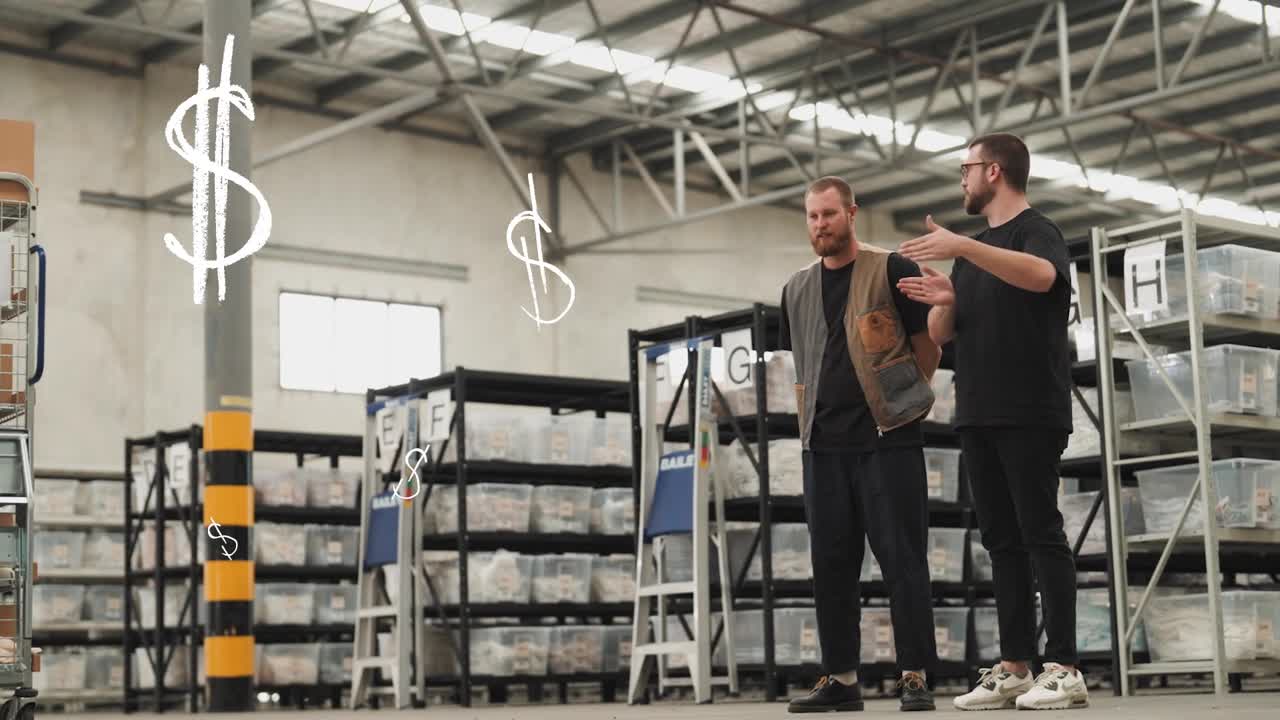Robots have the world at their metal fingertips. The potential of robotics is massive, and the promise they give to improve efficiency across all warehouse areas is impressive. So…what’s the catch?
- At the moment, they’re not the easy cure that everyone wants them to be, and they’re largely unproven.
- They’re not yet fit for use in most ecommerce warehouses, where people will remain the most essential resource for the foreseeable future.
What are the jobs that robots can’t do? And how can automation be employed to support human workers in the warehouse? Keep reading to find out.
BUYING
The responsibilities involved with buying can be split into three separate functions:
1. Deciding which products to buy
2. Deciding which supplier to buy from
3. Deciding on the freight that should be used
Each of these tasks currently requires human input. Deciding which supplier to buy from will become far more accessible in the near future. AI will eventually help to speed up the development of the Collaborative Supply Chain, a concept for companies across the supply chain to share more information to experience dramatic improvements to inventory management and enjoy subsequent cost reductions. In this way, software automation will help human buyers with some of their admin tasks – but people will still be needed to do the job properly.
PICKING
Robots look cool and undoubtedly improve efficiency, but they aren’t yet ready to deliver on ROI for the majority. Ocado’s investments haven’t had a payoff in real terms; profits and share values are decreasing, and the grocer still needs an additional £150m from their shareholders to make sure that the march of the robots is well-oiled.
Until these robots can prove they can deliver on ROI, they’re useless to most ecommerce companies. Far more useful: intelligent software like a WMS speeds up the picking process and makes it 100% accurate every time.
RECEIVING INBOUND
Robots will have a role to play with inbound deliveries, but that role will be supportive rather than autonomous. Break down the responsibilities at this stage, and it’s clear that some functions require a level of concentration, physicality, and tact that robots don’t have (yet):
- Measuring compliance
- Managing human resource requirements
- Determining whether items were delivered as expected
- Breaking down boxes and rebuilding ready for put away
- Quality control assurance
This area needs an overhaul to increase accuracy and speed. Software automation can help with more administrative tasks. And physical automation with the breaking down boxes – all aspects will still need people to work.
PUT AWAY
Here, physical automation will be a great help in speeding up the put-away process. But again, it won’t be able to run autonomously. It should work hand-in-glove with a human workforce. Walking is the biggest time-waster in a warehouse. That’s why physical automation will be such a godsend.
- Physical automation that speeds up the movement of goods, and people, from point A to point B should be welcomed
- This doesn’t need to be complicated: it could be something that a worker rides on around the warehouse or a conveyor belt that helps to transport goods
- More complex robotics will need to prove ROI to have any viability
REPLENISHMENT
Replenishment, or moving items from bulk to pick locations, is a job for a man or a woman with their machines in tow. They need to know the right amount of stock to bring across from bulk and transport this stock in a timely fashion.
While robots are in development to take over all replenishment tasks, the overall benefits still need to be stronger to justify the investment.
But improvements still need to be made. That’s where software comes in to help out with:
- Improving warehouse layouts and organisation
- Eliminating stock-outs from inaccurate forecasts
- Delivering real cost benefits through removing human error and increasing efficiencies
RETURNS
Currently, this job is almost exclusively handled by the ground staff in the warehouse, albeit in some cases with the assistance of a WMS that helps to keep track of subsequent inventory changes. It’s a process that needs to be speeded up.
Physical and software automation should be introduced here to help move things along a bit faster:
- Conveyors can speed up the movement of goods from when they were received to the returns desk.
- Software can help out greatly with quality assurance.
- More physical automation can transport goods for sale to the appropriate area within the warehouse.
Humans are still very much needed at returns; they could be helped more with the right technology.
Stock control
Here’s how stock control works in too many ecommerce warehouses:
- People see that items are running low…or have run out in a particular bay
- Then, the decision to restock is made on the fly
Not every warehouse is as bad as this – many have rules to ensure that stock levels are regularly checked and topped up – but there’s still a huge reliance on humans. Robots can’t help here. But software can.
Clunky, manual methods should soon die out. Technology currently exists, like a WMS, which makes controlling stock levels far easier for the people responsible. This isn’t technology that will replace humans; it’s a technology designed to make their lives easier.
INVENTORY COUNTING
Humans are needed for inventory counting. This isn’t something that robotics can feasibly handle in most warehouses, nor is it the best use of funds or resources. But the amount of time spent counting inventory and the resources dedicated to it must be reduced. Inventory counting can and should be made more efficient with the help of intelligent software.
With a WMS in place, the role and the responsibility almost disappear. It deals with real-time inventory counts, so the data is continually updated within its system every time an item is scanned.
This means the job’s already handled as warehouse workers engage with other tasks. Here, physical robotics won’t lead to a more streamlined workforce. But software just might.





